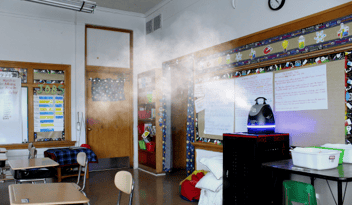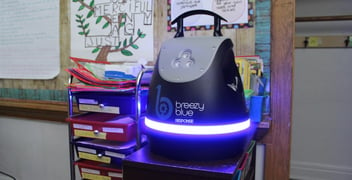
How Educators are Addressing Low Test Scores
The National Assessment of Educational Progress (NAEP) assesses student performance in the US by testing fourth and eighth graders, typically every two years. This year, the testing was completed between January and March for the first time since the COVID-19 pandemic. The “Nation’s Report Card,” as many people call it, showed declines in average scores and in proficiency all across the country.
Between 2019 and 2022, fourth graders’ math scores declined across 41 states, and there was a decline in eighth grade math across 49 states - Utah was the only state without significant decline in this category. Reading scores also fell in more than half of states, which shows a continuation of the declines seen in 2019.
COVID-19 Pandemic's Effect on Education
There’s no denying that the pandemic has affected (and is continuing to affect) students and their learning progress. The abrupt switch to virtual learning was a struggle for teachers and students, especially in lower income areas. Students lacked internet access, school materials, and attentiveness.
Chronic absenteeism rose by 12 percent for eighth through twelfth graders, meaning these students missed more than 10 percent of school days. These students typically have lower grades and are much less likely to graduate high school, so keeping kids in the classroom and engaged in their studies is vital to academic performance.
How Disinfecting Technology Benefits Schools
Prevent and Respond to Illness with Disinfecting Robots
One way that educators are keeping students in school and keeping them engaged is with robots. Disinfecting robots like Breezy One and Breezy Blue help students and staff stay healthy all throughout the season for flu, cold, norovirus, and everything else that might come up in a school. Daily disinfecting can be a preventative measure for schools to stay prepared, or these robots can be used in response to outbreaks. St. Mary's Catholic School has disinfected daily since the beginning of the pandemic, leading to a 41% reduction in nurse office visits as well as decrease in absenteeism by 18%. Other schools like Anansi Charter School have leveraged robots for responding to outbreaks, disinfecting rooms after positive COVID cases in 30 seconds. Either way, administrators are prioritizing health and safety to reduce absenteeism and increase grades and test scores.
STEM Engagement with Robots
In addition, robots are an interactive learning tool. Autonomous robots show students how science and robotics can be applied in the real world and just might inspire some kids to study STEM topics. Traditional teaching methods weren’t designed with this generation in mind; today’s students are well-versed with technology and can be exposed to the most advanced versions of it within the classroom. These kids will grow up to be the next workers and leaders, so they must get a feel for what the future of work requires.
For students to get back on track academically, the first step is getting them in a healthier learning environment and giving them face-to-face time with their teachers. Daily disinfection in classrooms is proven to reduce absences, and in a germ-filled place like a school, it makes a huge difference.
For more information on Build With Robots’ impact, especially in charter schools, click here.




